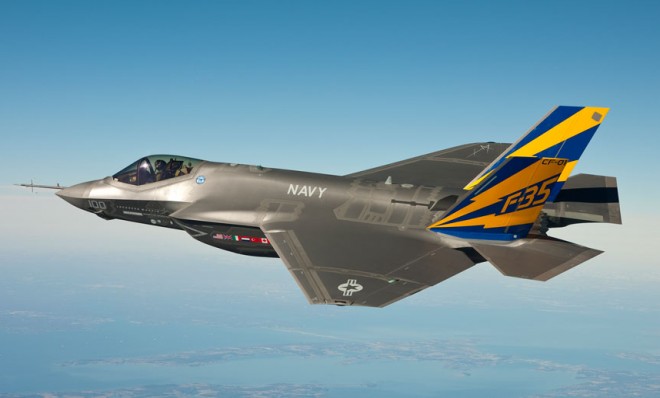5 U.S. military weapons reportedly compromised by Chinese hackers
The shortlist includes the insanely expensive F-35 Joint Strike Fighter

More than two dozen U.S. military weapons have been compromised by Chinese cyberspies, according to an unnerving new report by the Department of Defense [PDF]. The Washington Post reports the the "electronic intrusions gave China access to advanced technology that could accelerate the development of its weapons systems and weaken the U.S. military advantage in a future conflict."
While it's unclear exactly how much damage was done by the breaches, the designs include a formidable array of high-tech aircraft, missile defense systems, and long-range rockets. "This is billions of dollars of combat advantage for China," an anonymous military official tells The Post. "They've just saved themselves 25 years of research and development."
Here are a few of the weapons that were compromised:
The Week
Escape your echo chamber. Get the facts behind the news, plus analysis from multiple perspectives.

Sign up for The Week's Free Newsletters
From our morning news briefing to a weekly Good News Newsletter, get the best of The Week delivered directly to your inbox.
From our morning news briefing to a weekly Good News Newsletter, get the best of The Week delivered directly to your inbox.
1. PAC-3 Missile
Developed by Lockheed Martin, the Patriot Advanced Capability 3 missile is a "hit-to-kill" long-range weapon that's been touted as "the world's most advanced, capable, and powerful terminal air defense missile." It's most frequently used to intercept incoming targets. Army-Technology.com notes that in January 2012, the U.S. Army spent $921 million on PAC-3 missile contracts and their associated systems.
2. F-35 Joint Strike Fighter
The "stealth fighter of the future" has been criticized for being "unnecessary and too expensive." However, there's no denying that the $1.4 trillion project has created the world's foremost aerial weapon, capable of carrying an unprecedented payload of advanced missiles, while remaining untraceable to enemy radar.
A free daily email with the biggest news stories of the day – and the best features from TheWeek.com
3. The Navy's Aegis Ballistic-Missile Defense System
The sea-based defense system "provides warships with the capability of intercepting and destroying short and medium-range ballistic missiles," according to Navy-Technology.com. The Aegis, which was initially fielded in 2004 to track intercontinental ballistic missiles, successfully destroyed a non-working satellite during Operation Burnt Frost in February 2008.
4. F/A-18 Fighter Jet
The Hornet has been used for more than 30 years by militaries around the world, and can go from air-strike mode to dogfight mode at the flick of a switch. The F/A-18 is largely still seen as the weapon that's "defining America's air superiority," having undergone "extensive modifications and upgrades since its official introduction in the early 1980s," notes Business Insider.
5. V-22 Osprey
The "tiltrotor" Osprey has been used to quickly shuttle troops in and out of combat zones for the past two decades. "The osprey is not a helicopter that can fly as a plane," says U.S. News, "It is an airplane that can hover like a helicopter."
Indeed, what the V-22 is "very good for is getting places that are far away, fast, [and] where there is no runway," Richard Whittle, author of The Dream Machine: The Untold History of the Notorious V-22 Osprey, tells U.S. News. In fact, it was an Osprey that ferried the body of Osama bin Laden after he was killed in Pakistan in 2011.
-
 The 8 best action movies of the 21st century
The 8 best action movies of the 21st centurythe week recommends Thrills come in many forms, from assassins and spies to regular people fighting for justice
-
 Donald Trump and Jeffrey Epstein: a Timeline
Donald Trump and Jeffrey Epstein: a TimelineIN DEPTH The alleged relationship between deceased sex trafficker Jeffrey Epstein and Donald Trump has become one of the most acute threats to the president’s power
-
 ‘Latinos bring a wealth of knowledge and cultural connection to the ocean’
‘Latinos bring a wealth of knowledge and cultural connection to the ocean’Instant Opinion Opinion, comment and editorials of the day